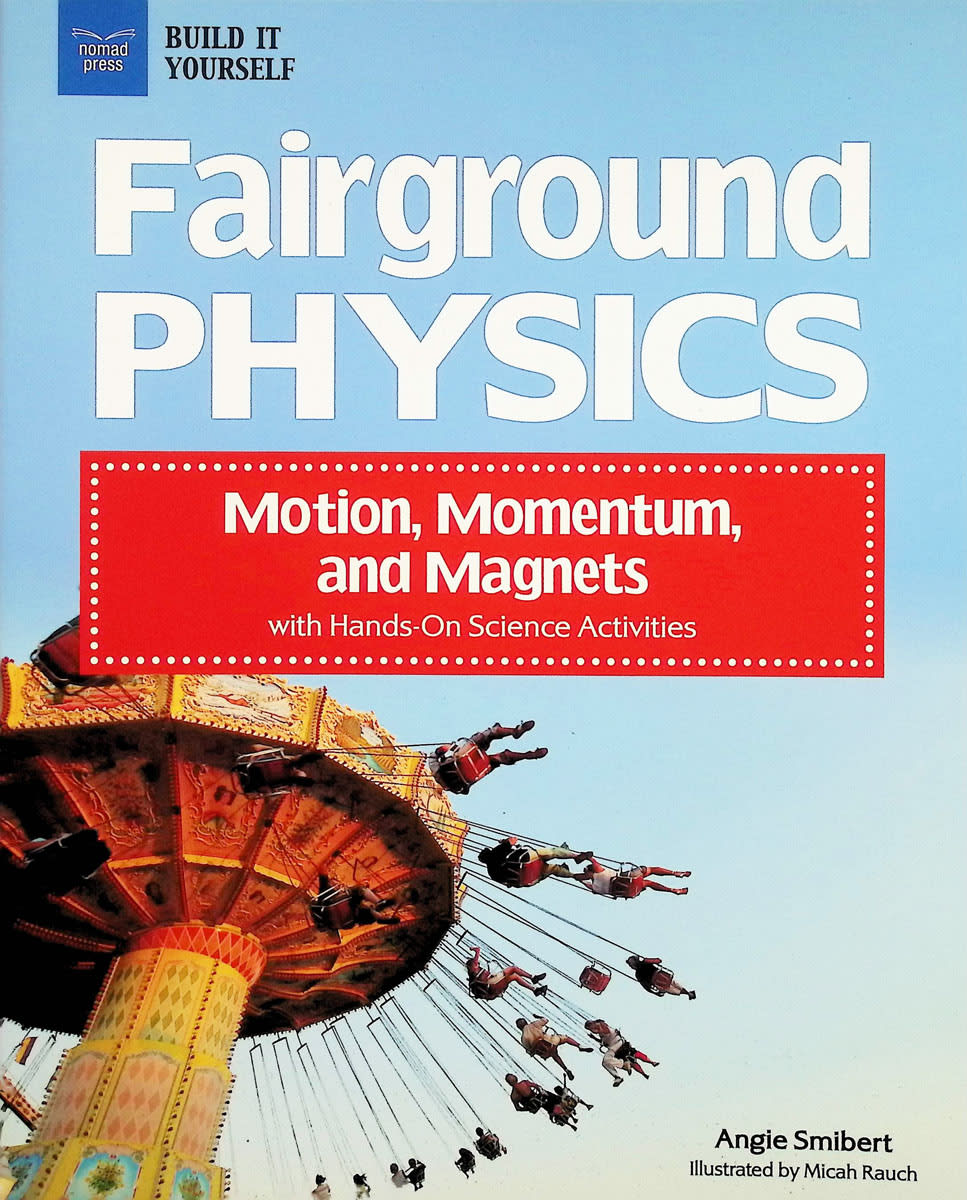Fairground Physics: Motion, Momentum, and Magnets with Hands-On Science Activities takes advantage of our fascination with fairground rides, food, and fun to introduce basic concepts of physics. While it is recommended for grades four through seven, you could supplement physical science or physics courses for older students with activities from this book.
This 122-page book covers more than I expected, albeit at an introductory level. Among the topics it addresses are gravity, force, energy, inertia, momentum, circuits, Newton’s laws of motion, centripetal force, centrifugal force, pendulums, heat, temperature, phases of matter, waves, and light. But it doesn’t read like a science textbook. It teaches through contexts—amusement park rides, lights, and sound, as well as food sold at the midway stands. QR codes throughout the book give students the sensations of thrill rides, weightlessness training with NASA, gravity experiments on the moon, and more. Vocabulary words are highlighted throughout the text and defined in sidebars.
The book has an introductory chapter plus six regular chapters. The introductory chapter should have been chapter one since it has almost as much content as the other chapters and includes two experiments. The other six chapters each have three to five experiments or activities. A few of these have students create their own simple “roller coasters” using different types of supplies. Other experiments demonstrate physics concepts such as by building a Play-Doh circuit to light up an LED, building a working accelerometer, building an “electromagnetic train” simulation (with magnets, a battery, and copper wire), making ice cream as they learn how salt lowers the freezing point of ice, and building a solar oven to bake s’mores. A few special items will be needed, but they should be relatively inexpensive and obtainable online.
Some background information is woven into the chapters, such as scientific discoveries made by Galileo Galilei and Sir Isaac Newton, the history of pleasure gardens which were precursors to amusement parks, and the invention of the Ferris wheel.
The book is illustrated with cartoon strips, drawings, and both historical and modern photos. At the back of the book are a glossary, an index of the QR codes, a standard index, and lists of recommended books and websites.
The book should provide plenty of science for at least a semester—maybe longer If you try to do all the activities and experiments. It doesn’t require an actual trip to a fairground, although that would certainly provide opportunities for students to make observations of physics in action.
Summary
Fairground Physics has got to be one of the best resources for introducing physics because it teaches concepts through exciting rides, junk food that kids love, and other features of amusement parks.









